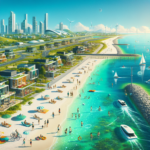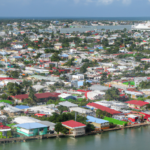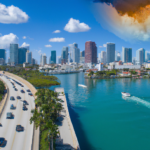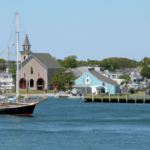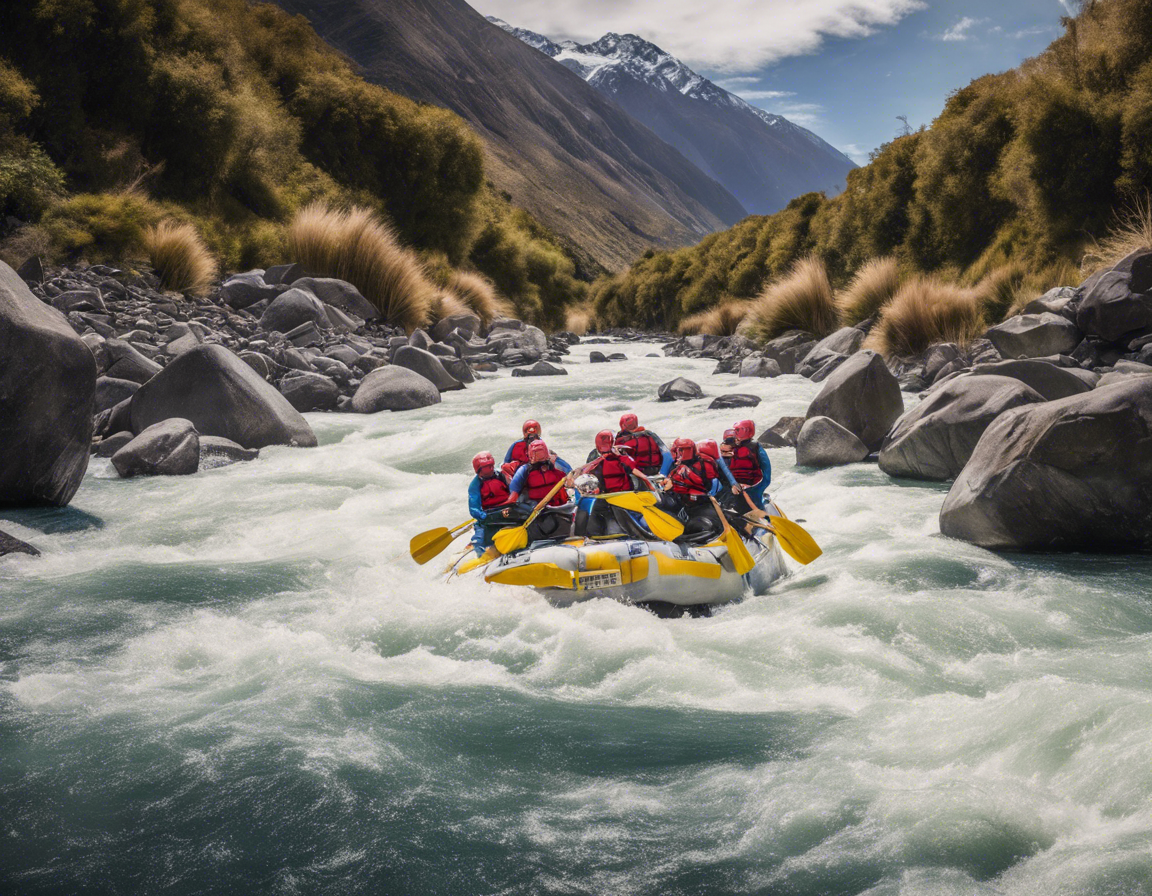
Whitewater Rafting in New Zealand:
New Zealand is renowned for its breathtaking landscapes and thrilling outdoor activities, with whitewater rafting standing out as a top adventure. This exhilarating experience combines stunning scenery with adrenaline-pumping rapids, making it a must-do for adventure seekers and couples alike. In this article, we will explore the best things to do in whitewater rafting in New Zealand, delve into its history, highlight trending destinations, and provide tips for an unforgettable trip.
A Brief History of Whitewater Rafting in New Zealand:
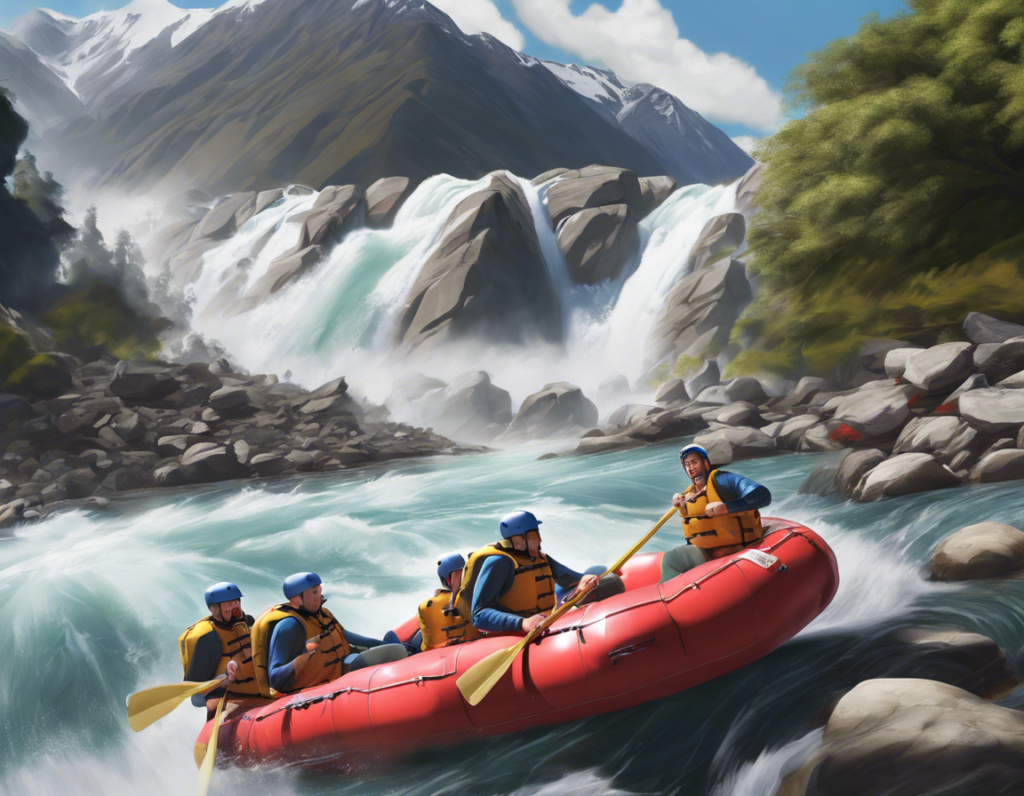
Whitewater rafting in New Zealand has a rich and fascinating history that intertwines with the country’s natural landscapes and cultural heritage. From its early beginnings to its status as a popular adventure sport today, whitewater rafting has evolved significantly over the years. Here’s a detailed exploration of its history and development in New Zealand.
Early Beginnings: The Use of Rivers
The origins of whitewater rafting can be traced back to ancient civilizations, where rivers were essential for transportation and sustenance. Early humans crafted rafts from logs, reeds, and animal hides to navigate rivers for practical purposes. This utilitarian use of rivers laid the groundwork for future exploration and adventure.
Exploration and Adventure
As societies advanced, the spirit of exploration flourished. In the 19th century, European and American explorers began to document their encounters with challenging rivers. These early accounts of navigating turbulent waters ignited a sense of adventure and curiosity among thrill-seekers. The first recorded attempt at navigating a whitewater river occurred in 1811 on the Snake River in Wyoming, USA, where ill-prepared adventurers faced significant challenges, leading to the river being nicknamed the “Mad River” due to its treacherous conditions12.
The Birth of Modern Whitewater Rafting
The transformation of whitewater rafting into a recreational sport began in the mid-20th century. This period saw the introduction of rubber rafts, which were more durable and suitable for navigating rapids. The first known rubber raft was developed in 1842 by Lieutenant John Freemont, who used it for exploratory purposes on the Platte River in Nebraska1. However, it wasn’t until after World War II that whitewater rafting gained widespread popularity.
In the 1950s, surplus military rubber rafts were repurposed for recreational use, leading to the establishment of commercial rafting businesses. One notable pioneer was John D. Rockefeller Jr., who initiated rafting trips on the Snake River, setting a precedent for commercial rafting operations across the United States1.
Whitewater Rafting in New Zealand
In New Zealand, whitewater rafting began to take shape as an adventure sport during this same post-war era. The country’s diverse geography, characterized by numerous fast-flowing rivers and stunning landscapes, made it an ideal location for rafting enthusiasts. One of the most iconic rivers for whitewater rafting is the Kaituna River, located near Rotorua. This river is famous for its challenging rapids and is home to Tutea Falls, the highest commercially rafted waterfall in the world at 7 meters34.
The Kaituna River has historical significance beyond its thrilling rapids; it holds deep cultural importance for the Māori people. Traditionally known as a bountiful fishing river for eels and whitebait, it is steeped in Māori history and lore3. The name “Kaituna” translates to “eat eels,” reflecting its historical significance as a food source.
Growth of Commercial Rafting
As interest in outdoor adventure grew throughout the 1980s and 1990s, commercial rafting operations expanded across New Zealand. Companies began offering guided tours that catered to various skill levels, from beginners to experienced rafters seeking adrenaline-pumping challenges. Safety measures also improved significantly during this time, with mandatory life jackets, helmets, and trained guides ensuring a secure experience for participants.
The Modern Era: A Global Phenomenon
Today, whitewater rafting is not only a popular activity in New Zealand but also a global phenomenon. It attracts adventurers from around the world who seek both thrills and scenic beauty. The sport has diversified into various forms, including family-friendly trips on calmer waters and extreme adventures on class V rapids5.
New Zealand’s reputation as an adventure capital continues to grow, with destinations like Queenstown becoming synonymous with outdoor activities. Here, visitors can experience not just rafting but also bungee jumping, skydiving, and other adrenaline-fueled pursuits.
Conclusion
The history of whitewater rafting in New Zealand is a testament to human curiosity and our desire to conquer nature’s challenges while enjoying its beauty. From ancient navigators relying on rivers for survival to modern adventurers seeking thrills on tumultuous rapids, whitewater rafting has evolved into an iconic outdoor activity that embodies both excitement and respect for nature.
Whether you are an experienced rafter or a first-time adventurer looking to navigate New Zealand’s stunning waterways, this exhilarating sport offers an unforgettable experience that connects participants with both history and nature.
10 Best Things for Couples to Do in Whitewater Rafting in New Zealand:
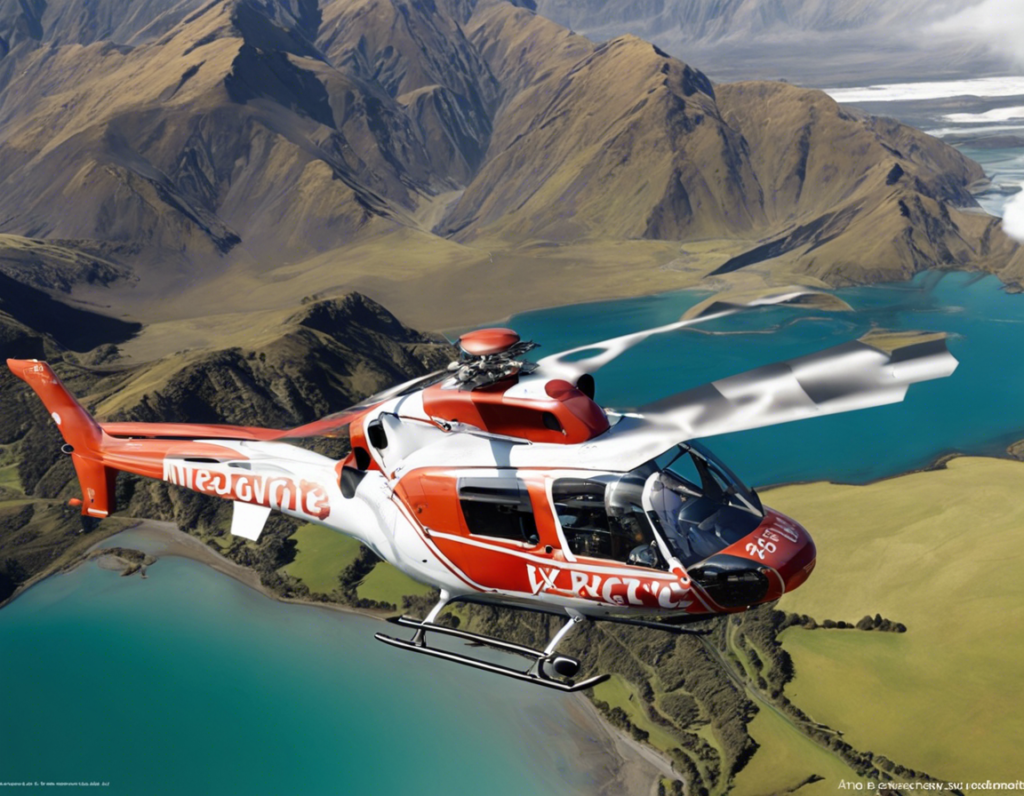
New Zealand is a haven for adventure enthusiasts, particularly those looking to experience the thrill of whitewater rafting. With its stunning landscapes and exhilarating rapids, rafting provides a unique opportunity for couples to bond while enjoying the great outdoors. Here are the ten best activities couples can do while whitewater rafting in New Zealand, enriched with engaging details and a sprinkle of humor.
1. Tackle Tutea Falls Together
Experience the Thrill: Rafting over Tutea Falls, the highest commercially rafted waterfall in the world at 7 meters, is an absolute must. The rush of plunging down this iconic drop will have you both holding on tight—and possibly screaming!
Why It’s Great: Conquering this waterfall together not only builds trust but also creates a shared memory that will be hard to top. Just remember, if one of you screams louder, the other gets bragging rights!
2. Go for a Scenic Helicopter Ride
Elevate Your Adventure: For couples wanting to add a romantic twist to their adventure, consider a heli-rafting trip. You’ll enjoy breathtaking aerial views of New Zealand’s stunning landscapes before descending into the thrilling rapids.
Why It’s Great: Soaring above the scenery sets a romantic tone, and once you hit the water, you can both share in the excitement of the ride. Just make sure your partner doesn’t drop their phone while trying to capture that perfect selfie!
3. Enjoy a Riverside Picnic
Post-Rafting Relaxation: After an adrenaline-filled day, unwind with a picnic by the riverbank. Pack some delicious local treats and enjoy each other’s company surrounded by nature.
Why It’s Great: Sharing food after an adventure is always special. Plus, it gives you both a chance to relive the day’s excitement—just don’t let your sandwiches get soggy from all that splashing!
4. Explore Queenstown’s Nightlife
After-Rafting Fun: Queenstown is famous for its vibrant nightlife. After your rafting adventure, explore local bars and clubs to celebrate your day.
Why It’s Great: Dance the night away at popular spots like Skybar or The Bunker, where you can toast to your rafting triumphs. Just be prepared for some friendly competition over who can do the best dance moves—bonus points for rafting-themed ones!
5. Indulge in Wine Tasting
Sip and Savor: Take a break from the rapids and indulge in wine tasting at one of Gibbston Valley’s renowned wineries.
Why It’s Great: Wine tasting is not only relaxing but also allows you to learn about New Zealand’s exquisite wines together. Just make sure not to confuse your wine glass with your rafting helmet—both are important, but for different reasons!
6. Cliff Jumping Adventure
Leap of Faith: For couples seeking extra thrills, cliff jumping into the river can be an exhilarating experience! Many rafting companies offer safe spots for this adventurous activity.
Why It’s Great: Jumping off cliffs together is sure to bring you closer—literally! Just ensure you both jump at the same time; otherwise, it might lead to some playful ribbing about who was too scared!
7. Relax in Hot Pools
Soak Your Muscles: After a day filled with excitement, unwind in one of Rotorua’s famous hot pools.
Why It’s Great: Soaking together in warm waters provides an intimate setting to discuss your favorite moments from the day—like who managed to stay upright during Tutea Falls!
8. Capture Memories with Waterproof Cameras
Snap Away!: Don’t forget to bring along a waterproof camera! Capturing moments on the river will give you lasting memories of your adventure.
Why It’s Great: You’ll want proof of all those wild faces and splashy moments! Plus, reviewing photos later will give you both plenty of laughs—especially if someone has “that look” while going over a rapid.
9. Attend Local Festivals or Events
Cultural Experiences: Check out local events or festivals happening during your visit for unique cultural experiences.
Why It’s Great: Participating in local festivities allows you to immerse yourselves in New Zealand culture while enjoying live music and delicious food—just be ready to try that strange-looking dish everyone raves about!
10. Plan a Rafting Combo Tour
Maximize Adventure Time: Many companies offer combo packages that include other activities like zip-lining or bungee jumping along with rafting.
Why It’s Great: Combining multiple adventures means more shared experiences—and more opportunities for playful competition! Who can scream louder on the bungee jump?
Whitewater rafting in New Zealand offers couples not just thrilling adventures but also opportunities for bonding and creating lasting memories together. From conquering waterfalls to relaxing in hot pools, each experience adds depth to your relationship while providing plenty of laughs along the way. So grab your partner, pack your sense of adventure, and get ready for an unforgettable journey on New Zealand’s wild rivers!
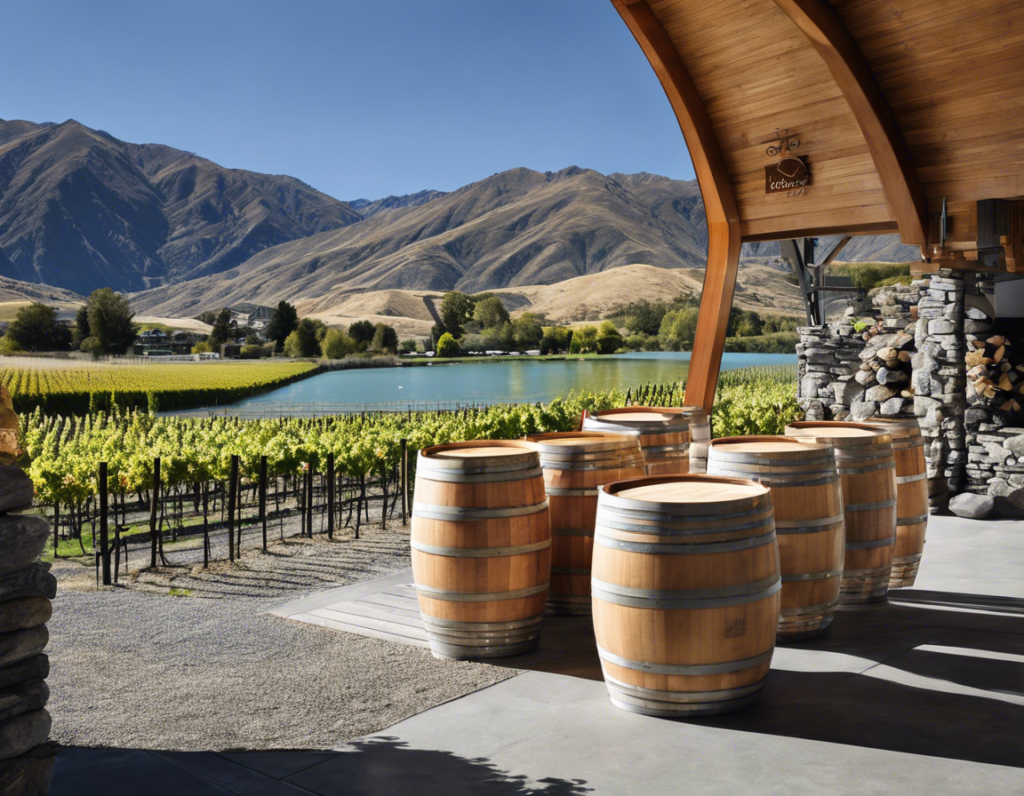

Trending Best Places to Visit for Whitewater Rafting:
New Zealand is a premier destination for whitewater rafting, offering diverse rivers that cater to all skill levels and provide breathtaking scenery. Here are some of the trending best places to visit for whitewater rafting in New Zealand, each with its unique features and experiences.
1. Kaituna River
Location: Bay of Plenty
Highlights: Home to Tutea Falls, the highest commercially rafted waterfall in the world at 7 meters, the Kaituna River is a must-visit for thrill-seekers. The river offers a mix of challenging rapids suitable for both beginners and experienced rafters.
Why Visit: The stunning natural surroundings and the excitement of navigating through Grade 5 rapids make it a top choice for adventure lovers. Plus, it’s conveniently located near Rotorua, making it easily accessible.
2. Shotover River
Location: Queenstown
Highlights: Known as the adventure capital of New Zealand, the Shotover River features crystal-clear waters and exhilarating rapids. The river is famous for its narrow canyons and thrilling drops.
Why Visit: The combination of breathtaking scenery and adrenaline-pumping rapids makes this river a favorite among experienced rafters. The iconic Skippers Canyon section offers some of the most challenging rapids in the country.
3. Tongariro River
Location: Near Taupo
Highlights: This river offers Grade 3 rapids surrounded by stunning landscapes, including views of Mount Ruapehu. It’s ideal for families and those seeking a scenic rafting experience.
Why Visit: The Tongariro River is perfect for a relaxed day on the water, making it great for couples or families looking to enjoy nature without extreme challenges.
4. Rangitikei River
Location: North Island
Highlights: Known for its clear waters and picturesque surroundings, the Rangitikei River features Class III to IV rapids that provide an exciting experience for rafters.
Why Visit: This river is suitable for both beginners and experienced rafters, making it a versatile option for groups with varying skill levels.
5. Mohaka River
Location: Hawke’s Bay
Highlights: The Mohaka River offers a range of rafting experiences from mild to extreme, with beautiful scenery including deep gorges and native wildlife.
Why Visit: For those looking for a more challenging adventure, the Mohaka provides options for multi-day trips along its 172 km length, allowing you to immerse yourself in nature.
6. Wairoa River
Location: Bay of Plenty
Highlights: This river features exhilarating rapids that range from Grade II to V, controlled by a hydro dam which makes it available only on select days throughout the year.
Why Visit: The Wairoa is known for its thrilling whitewater experience and is perfect for those looking to test their limits on challenging waters.
7. Buller River
Location: West Coast of the South Island
Highlights: The Buller River offers a variety of rapids suitable for all skill levels, with stunning views of lush forests and mountains.
Why Visit: This river is ideal for families and groups looking for a fun day out on the water without sacrificing excitement.
8. Whataroa River
Location: Near Franz Josef Glacier
Highlights: Known for its remote location and breathtaking scenery, this river features glacial waters with Grade III to V rapids.
Why Visit: The unique experience of rafting in glacial waters combined with stunning landscapes makes this an unforgettable adventure.
9. Rangitata River
Location: Canterbury Region
Highlights: This river offers a combination of calm stretches and thrilling rapids ranging from Grade II to V, surrounded by the majestic Southern Alps.
Why Visit: With options suitable for both beginners and experts, the Rangitata provides an excellent opportunity to experience New Zealand’s natural beauty while enjoying exciting rafting.
10. Kiwi Cave Rafting (Black Water Rafting)
Location: Waitomo Caves
Highlights: While technically not traditional whitewater rafting, this unique experience involves rafting through underground caves illuminated by glowworms.
Why Visit: It’s a once-in-a-lifetime experience that combines adventure with stunning natural beauty in an entirely different setting.
New Zealand’s rivers offer some of the best whitewater rafting experiences in the world, catering to adventurers of all skill levels. Whether you’re seeking heart-pounding thrills or scenic family-friendly trips, there’s a perfect spot waiting for you. Each location provides not only an adrenaline rush but also an opportunity to connect with nature’s beauty—making your rafting adventure truly unforgettable!
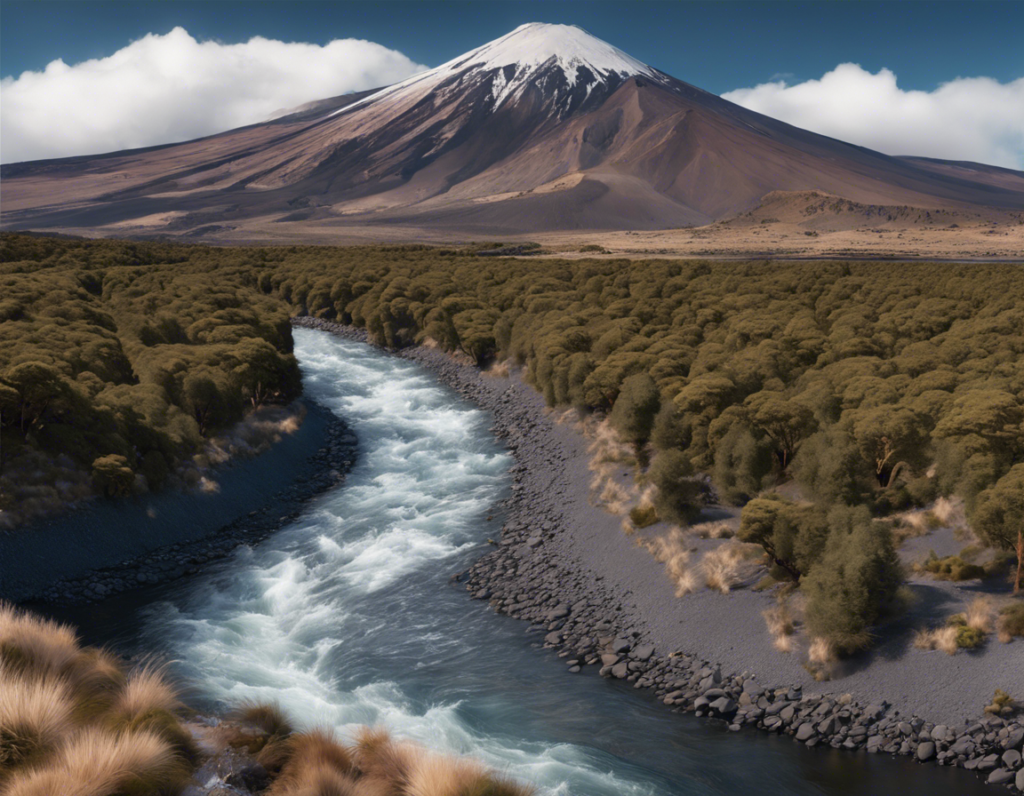
Top Restaurants and Cuisine :
New Zealand’s culinary scene is as diverse and vibrant as its stunning landscapes. From fine dining to casual eateries, the country offers a plethora of dining options that reflect its rich cultural heritage and local produce. Here’s a closer look at some of the top restaurants and cuisine you can explore while visiting New Zealand, highlighting unique dining experiences and must-try dishes.
Top Restaurants in New Zealand
1. Rata
Location: Queenstown
Cuisine: Modern New Zealand
Highlights: Operated by renowned chef Josh Emett, Rata emphasizes local ingredients with a contemporary twist. The menu features dishes like New Zealand octopus with saffron aioli and local venison.
Why Visit: Rata is often celebrated as one of the best restaurants in New Zealand, making it a perfect spot for foodies looking to indulge in high-quality, sustainable cuisine.
2. Hiakai
Location: Wellington
Cuisine: Māori-inspired
Highlights: Chef Monique Fiso crafts a menu that celebrates traditional Māori ingredients with modern techniques. You can try unique dishes like tītī (muttonbird) and seasonal bush foods.
Why Visit: Hiakai offers a rare opportunity to experience indigenous cuisine in an innovative setting, making it a must-visit for those interested in cultural dining.
3. The French Café
Location: Auckland
Cuisine: Fine Dining
Highlights: Acclaimed for its intricate contemporary NZ fare, The French Café provides a chic atmosphere paired with an exquisite menu featuring local produce.
Why Visit: This restaurant has consistently been recognized for its outstanding service and culinary artistry, perfect for a romantic night out or special occasion.
4. Ortega Fish Shack
Location: Wellington
Cuisine: Seafood
Highlights: Known for its fresh seafood, Ortega offers dishes like lobster-and-prawn ravioli and sautéed paua (New Zealand abalone).
Why Visit: This stylish eatery combines a love of the ocean with exceptional craft beers, making it an ideal spot for seafood lovers.
5. Elephant Hill Wine Estate & Restaurant
Location: Hawke’s Bay
Cuisine: Modern New Zealand
Highlights: Set within a stunning vineyard, this restaurant offers seasonal dishes paired with excellent local wines.
Why Visit: The picturesque setting and high-quality cuisine make it a perfect destination for wine enthusiasts and those looking to enjoy a leisurely meal.
6. Sidart
Location: Auckland
Cuisine: Fine Dining
Highlights: Known for its creative tasting menus that showcase seasonal ingredients, Sidart has won numerous awards for its innovative approach to fine dining.
Why Visit: The artistic presentation of dishes and the intimate atmosphere make it an unforgettable dining experience.
7. One Tree Grill
Location: Auckland
Cuisine: Contemporary Kiwi
Highlights: Offering high-end creative NZ cuisine, One Tree Grill is known for its extensive wine list and cozy atmosphere.
Why Visit: It’s perfect for those looking to enjoy a relaxed yet upscale dining experience with locally sourced ingredients.
8. Bistronomy
Location: Napier
Cuisine: Contemporary European
Highlights: Bistronomy focuses on seasonal ingredients and creative dishes in a stylish setting. Their chef’s choice menu is particularly popular.
Why Visit: This restaurant showcases the best of Hawke’s Bay produce and is known for its excellent value.
9. Ahi
Location: Auckland
Cuisine: Contemporary NZ
Highlights: Ahi focuses on sustainable cooking practices using local ingredients, offering a menu that highlights the flavors of New Zealand.
Why Visit: Its commitment to sustainability combined with innovative dishes makes it a standout choice for environmentally conscious diners.
10. Riverstone Kitchen
Location: Otago
Cuisine: Farm-to-table
Highlights: Often hailed as one of the best regional restaurants, Riverstone Kitchen serves meals made from organic produce grown on-site.
Why Visit: The relaxed atmosphere and focus on fresh, local ingredients make it an excellent spot for families or casual dining.


Must-Try Dishes:
When exploring New Zealand’s culinary landscape, be sure to try some of these iconic dishes:
Hāngī – A traditional Māori method of cooking food in an earth oven, often featuring meats and root vegetables.
Pavlova – A classic dessert made with meringue, topped with fresh fruit and whipped cream—perfect for those with a sweet tooth.
Fish and Chips – Freshly caught fish served with crispy chips is a staple across coastal towns.
Lamb Rack – Known for its tenderness and flavor, New Zealand lamb is often featured on fine dining menus.
Green-Lipped Mussels – A local delicacy that can be enjoyed steamed or in various dishes.
New Zealand’s top restaurants offer diverse culinary experiences that reflect the country’s rich agricultural heritage and multicultural influences. Whether you’re seeking fine dining or casual eats, the vibrant food scene promises something for every palate. Exploring these restaurants will not only satiate your hunger but also provide insight into New Zealand’s unique culture through its flavors!
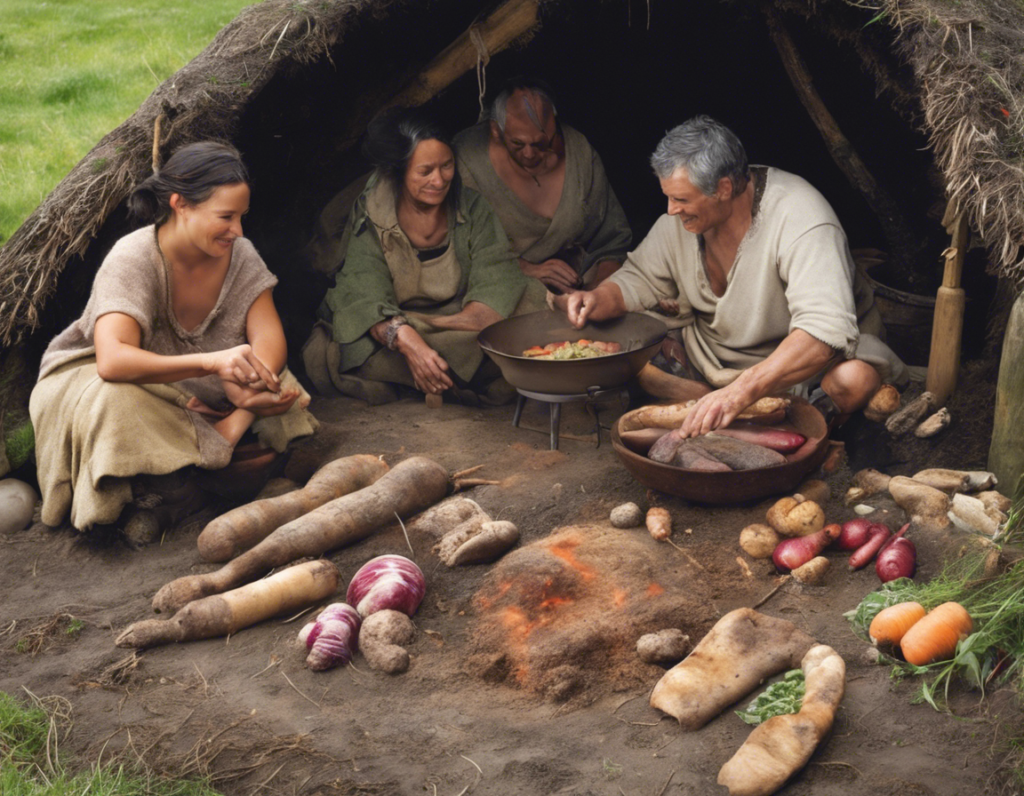
Top 15 Things for Families to Do in Whitewater Rafting in New Zealand:
- Family-Friendly Rafting Trips: Opt for Grade 2 rafting trips suitable for families with children.
- Visit Rotorua’s Geothermal Parks : Explore geysers and hot springs at places like Te Puia or Wai-O-Tapu.
- Take a Scenic Cruise on Lake Taupo: Enjoy stunning views while cruising on New Zealand’s largest lake.
- Go Mountain Biking: Trails suitable for all skill levels are available around Queenstown and Rotorua.
- Explore Hobbiton: A must-see for fans of The Lord of the Rings; take a guided tour through this iconic film set.
- Visit Wildlife Parks: Discover native wildlife at parks like Orana Wildlife Park or Kiwi Birdlife Park.
- Try Zorbing: Experience rolling downhill inside a giant inflatable ball – fun for all ages!
- Enjoy Local Markets: Visit farmers’ markets to sample fresh produce and local crafts.
- Take Part in Cultural Experiences: Engage with Māori culture through performances or traditional feasts (hangi).
- Go Horseback Riding: Explore scenic trails on horseback; many operators cater to families.
- Visit Adventure Parks: Places like Skyline Queenstown offer luge rides and bungee swings that are family-friendly.
- Explore National Parks: Take family hikes in Tongariro National Park or Fiordland National Park.
- Try Kayaking or Paddleboarding: Calm waters around lakes provide excellent opportunities for family water sports.
- Attend Local Events or Festivals: Check community calendars for family-friendly events during your visit.
- Relax at Family-Friendly Accommodation: Choose lodges or holiday parks that cater specifically to families with kids’ activities available.
Transportation Tips:
When traveling around New Zealand, having a solid understanding of your transportation options is essential for a smooth and enjoyable experience. Here are some transportation tips to help you navigate the country effectively, whether you prefer public transport, driving, or other means.
1. Renting a Car
Flexibility: Renting a car is one of the most popular ways to explore New Zealand. It offers the freedom to travel at your own pace and access remote areas that public transport may not reach.
Driving Conditions: New Zealand has well-maintained roads, but be prepared for winding roads in rural areas. Always check road conditions, especially in winter.
Rental Companies: Major rental companies include Hertz, Avis, and Budget. It’s advisable to book in advance, especially during peak tourist seasons.
2. Campervans and Motorhomes
Adventure on Wheels: Traveling by campervan allows you to combine transportation and accommodation. Many campsites are available throughout the country, often in stunning locations.
Freedom Camping: If you plan to freedom camp (stay overnight in designated areas), ensure your vehicle is certified self-contained to comply with local regulations.
Cost Considerations: While campervans can save on accommodation costs, they may be more expensive than renting a car plus booking hotels.
3. Public Transport Options
Buses: The most common form of public transport, especially in urban areas. InterCity is the main national bus service connecting major cities and towns. Local buses operate within cities like Auckland and Wellington.
Tip: Purchase an InterCity Flexi Pass for flexible travel options across the network.
Trains: While limited compared to buses, scenic train journeys like the TranzAlpine, Coastal Pacific, and Northern Explorer offer breathtaking views and unique experiences.
Tip: Book train tickets in advance during peak seasons as they can sell out quickly.
Ferries: Essential for traveling between the North and South Islands. The Interislander ferry operates between Wellington and Picton, while various ferries connect smaller islands.
Tip: Consider booking a combined bus and ferry ticket for convenience.
4. Ride-Sharing Services
Convenience: Services like Uber are widely available in major cities such as Auckland, Wellington, and Christchurch. They provide an easy way to get around without needing a car.
Cost-Effective: Ride-sharing can be more economical than taxis, especially for short distances or when traveling with others.
5. Domestic Flights
Quick Travel: For longer distances, domestic flights are efficient. Airlines like Air New Zealand and Jetstar offer routes connecting major cities.
Tip: Booking flights in advance can lead to significant savings.
6. Cycling and Walking
Eco-Friendly Options: Many cities have bike rental services, making cycling a great way to explore urban areas or scenic routes like the Otago Central Rail Trail.
Walking Tours: Consider joining walking tours in cities for a more immersive experience while learning about local culture and history.
7. Transport Passes
Prepaid Cards: In cities like Auckland (AT HOP card) and Wellington (Snapper card), prepaid transport cards offer discounted fares across buses, trains, and ferries.
Tip: These cards also have daily caps on spending, making them budget-friendly options for frequent travelers.
8. Hitchhiking
Common Practice: Hitchhiking is relatively safe and common among backpackers in New Zealand. Many locals are willing to give rides to travelers.
Safety Tips: Always use your judgment when accepting rides; it’s best to hitchhike in pairs if possible.
9. Plan Your Routes
Use Navigation Apps: Utilize apps like Google Maps or local navigation tools to plan your routes efficiently. These apps provide real-time traffic updates and alternative routes if needed.
Travel Times: Be aware that travel times can vary significantly based on road conditions; always allow extra time for scenic stops along the way.
10. Accessibility Considerations
Many public transport options are equipped with features for accessibility, including ramps on buses and designated seating areas.
If you require specialized transportation services, companies like Freedom Mobility offer vehicles tailored for individuals with disabilities.
Navigating New Zealand can be an enjoyable part of your travel experience if you plan ahead and choose the right transportation options that suit your needs. Whether you opt for the freedom of a rental car or the convenience of public transport, each method offers unique advantages that will enhance your adventure through this beautiful country
About Wildlife:
New Zealand is renowned for its unique and diverse wildlife, much of which is endemic to the islands. The country is home to a variety of species, including birds, reptiles, and marine life, many of which are under threat due to habitat loss, invasive species, and human activity. Here’s an overview of New Zealand’s wildlife, conservation efforts, and how you can engage with and protect this precious biodiversity.
Unique Wildlife of New Zealand
1. Endemic Species
New Zealand boasts a high proportion of endemic species, meaning they are found nowhere else in the world. Notable examples include:
Kiwi: A flightless bird and national symbol of New Zealand, known for its unique long beak and nocturnal habits.
Kākāpō: A critically endangered parrot that is also flightless; conservation efforts have focused on breeding and habitat restoration.
Tuatara: Often referred to as a “living fossil,” this reptile resembles lizards but belongs to a unique order called Rhynchocephalia.
2. Marine Life
New Zealand’s waters are rich in marine biodiversity. The country is home to:
Hector’s Dolphin: One of the smallest dolphin species in the world, found only in New Zealand waters.
Yellow-eyed Penguin: Considered one of the rarest penguins globally, it is known for its distinctive yellow eyes and pale yellow band around its head.
Conservation Efforts
1. Government Initiatives
The New Zealand government has implemented various measures to protect its wildlife and habitats:
Biodiversity Strategy: A comprehensive plan aimed at reversing the decline of native species through habitat protection, pest control, and public engagement.
National Parks and Reserves: Approximately 30% of New Zealand’s land is designated for conservation purposes, including 13 national parks and numerous marine reserves 24.
2. Community and NGO Involvement
Numerous organizations work tirelessly to protect New Zealand’s wildlife:
Auckland Zoo: Actively breeds endangered species like the kiwi and wētāpunga, releasing them back into the wild as part of their conservation programs 3.
WWF-New Zealand: Focuses on protecting marine environments and advocating for sustainable practices to preserve biodiversity 6.
3. Innovative Conservation Techniques
Recent initiatives include using technology such as drones for seed dispersal and developing biodiversity credit systems that incentivize landowners to engage in conservation efforts 1. These innovative approaches aim to enhance habitat restoration and increase public participation in wildlife protection.
How You Can Help
Respect Wildlife: When visiting natural areas, maintain a safe distance from wildlife. Avoid feeding animals as it can harm their health.
Participate in Conservation Programs: Many organizations offer volunteer opportunities or citizen science projects where you can contribute to local conservation efforts.
Support Sustainable Tourism: Choose eco-friendly tours that prioritize wildlife protection and contribute to conservation initiatives.
Stay Informed: Educate yourself about local species and conservation issues through resources provided by organizations like the Department of Conservation or local wildlife trusts.
Conclusion
New Zealand’s wildlife is a national treasure that reflects the country’s unique ecological heritage. With ongoing conservation efforts, there is hope for many endangered species; however, collective action is essential to ensure their survival. By understanding the challenges facing New Zealand’s wildlife and actively participating in conservation efforts, both locals and visitors can help protect this beautiful country’s natural legacy for future generations.
Travel Tips:
When planning your trip to New Zealand, having a solid set of travel tips can significantly enhance your experience. Here’s a comprehensive guide to help you navigate the country effectively, ensuring you make the most of your adventure.
1. Don’t Try to Do Everything
New Zealand is a small country with a vast array of attractions spread across its two main islands. While it may be tempting to try to see everything, it’s crucial to prioritize your must-dos and create a realistic itinerary. Aim for quality over quantity—take the time to enjoy each location rather than rushing through them. This approach will help you avoid feeling overwhelmed and allow for spontaneous adventures along the way12.
2. Plan According to the Season
Understanding New Zealand’s seasons is essential for maximizing your visit:
Summer (December to February): Ideal for beach activities and outdoor adventures, but expect larger crowds.
Autumn (March to May): Offers beautiful fall foliage and fewer tourists, making it great for hiking and exploring.
Winter (June to August): Perfect for skiing in the South Island, but some activities may be limited due to cold weather.
Spring (September to November): A lovely time for hiking with blooming flowers and mild weather12.
3. Know Your Transport Options
Transportation in New Zealand varies widely, so choose what best suits your travel style:
Renting a Car: The most flexible option, allowing you to explore at your own pace. Be aware that New Zealand drives on the left side of the road.
Public Transport: Intercity buses and trains connect major cities and towns. This is a budget-friendly option but may take longer than driving.
Domestic Flights: Useful for covering long distances quickly, especially between the North and South Islands.
Guided Tours: Great for those who prefer not to drive; these tours often include transportation and knowledgeable guides14.
4. Accommodation Considerations
If you’re traveling on a budget, consider staying in campsites or holiday parks. However, be mindful of local camping regulations as freedom camping is restricted in many areas. Booking accommodations in advance during peak seasons is advisable to secure your preferred options12.
5. Learn About Local Customs and Culture
Understanding Māori culture is an integral part of experiencing New Zealand. Engage with local customs by participating in cultural performances or visiting marae (Māori meeting grounds). Learning a few phrases in Te Reo Māori can also enhance your interactions with locals2.
6. Pack Accordingly
The weather can change rapidly in New Zealand, so packing layers is key. Bring waterproof clothing, sturdy shoes for hiking, and sun protection. If you plan on engaging in outdoor activities like rafting or hiking, ensure you have appropriate gear14.
7. Stay Connected
While many areas have good mobile coverage, some remote locations may not have service. Consider purchasing a local SIM card or an international roaming plan before your trip. Wi-Fi is widely available in urban areas and accommodations2.
8. Respect Nature
New Zealand prides itself on its stunning natural landscapes and biodiversity. Always follow the “Leave No Trace” principles—take your rubbish with you, stick to marked trails, and respect wildlife by observing from a distance12.
9. Emergency Preparedness
Familiarize yourself with emergency numbers—dial 111 for police, fire, or ambulance services. It’s also wise to have travel insurance that covers outdoor activities if you plan on engaging in adventure sports4.
10. Enjoy Local Cuisine
New Zealand offers a diverse culinary scene influenced by its multicultural population. Be sure to try local specialties such as:
Hāngī: A traditional Māori dish cooked underground.
Pavlova: A delightful meringue dessert topped with fruit.
Fresh Seafood: Enjoy fish and chips or green-lipped mussels from coastal towns.
Exploring local markets can also provide insight into regional produce and cuisine24.
Conclusion
Traveling in New Zealand can be an unforgettable experience filled with breathtaking landscapes, rich culture, and adventure opportunities. By following these tips, you’ll be well-prepared to navigate the country efficiently while enjoying everything it has to offer. Whether you’re hiking through national parks or savoring local dishes, embracing the journey will lead to cherished memories!
Whitewater rafting in New Zealand promises not just adrenaline but also unforgettable experiences amidst stunning landscapes—perfect for couples seeking adventure or families looking to bond over shared thrills!

